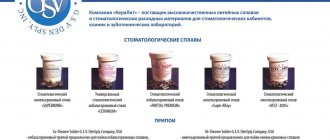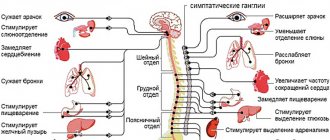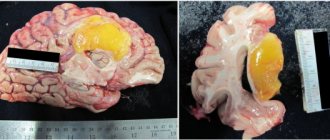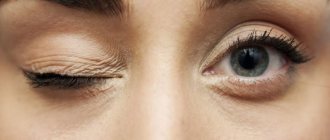Mysophobia is a mental disorder expressed in the obsessive fear of becoming infected from contact with any kind of pollution. Where an ordinary person sees a space that is not ideally clean, but quite suitable for life, a mysophobe will see billions of life-threatening microbes, bacteria, and viruses. All this fills his life with endless worries and a constant desire to make the world around him sterile.
General information
Mysophobia , or otherwise fear of pollution, is a psychological disorder and is expressed in the form of an obsessive fear of getting dirty, being in a polluted room, and in general, of coming into contact with dirt and potentially contaminated objects.
It should be distinguished from germophobia, verminophobia, bacteriophobia (fear of germs) and other phobias , where fear consists of the fear of contracting an infectious bacterial or other disease when interacting with contaminated objects and the risk of getting germs, for example, on your hands. If earlier the desire to wash your hands was a sign of fear of dirt and obsessive-compulsive disorder , then later the American psychologist G.S. Stellivan found out that the basis is not a fear of dirt and germs, but solely the desire to ensure that hands are always washed.
Despite the fact that the disorder is quite rare, many famous people suffered from it - F. Nietzsche, V. Mayakovsky, V. Dobrynin, etc., and was also highlighted in such films as “It Can’t Be Better”, “Cleaning with Passion” ", in the television series "The Big Bang Theory" (main character S. Cooper)
Symptoms of mysophobia
Fear of germs and dirt has its own psychological, physiological and behavioral symptoms.
If a person has to touch a doorknob or physical contact with another person is possible, the mysophobe exhibits the following symptoms:
- pulse quickens;
- shortness of breath begins, shortness of breath begins;
- nausea and dizziness begin;
- the muscles of the body begin to spasm or tremors are observed.
Essentially, contact with anything causes panic, uncontrollable fear and disgust. Even if a person just goes along, it can cause a severe reaction, especially if he sneezed or coughed.
Psychologically, the disease of fear of dirt is manifested by the following symptoms:
- severe anxiety;
- attention wanders. A person can repeat the same action dozens of times, forgetting that he already did it a few minutes ago;
- being in a constant state of stress and depression.
Behavioral manifestation of fear of germs and dirt
- The patient washes his hands frequently and thoroughly and treats them with an antiseptic. In half an hour a person can wash their hands up to 25 times.
- Mysophobes often wear gloves and a mask on their hands to avoid touching or breathing in germs.
- Avoids crowded places and does not travel by public transport. It's torture for him to go into a store, let alone a public toilet.
- He does not offer his hand for a handshake, is reluctant to open the door, does not touch the railing and, in principle, avoids contact with anything that seems dirty to him.
- All personal items are separated from common items. He has his own office, his own dishes, food.
- They isolate themselves from society.
- A person makes his home perfectly clean and treats absolutely everything with an antiseptic. Often they do not allow anyone outside, not even relatives, into their home.
Naturally, this disease does not allow a person to live a full life, communicate with relatives and friends, or go to school or work. If a mysophobe tries to live an ordinary life, he often becomes an outcast in any group, since he seems strange and hostile to people.
Pathogenesis
Mysophobia may be a manifestation of obsessive-phobic symptoms of schizotypal personality disorder . As the main components of the syndrome, obsessive fear of pollution and fear of germs can be exacerbated under certain conditions, causing patients to become antisocial and isolated. For example, Mayakovsky had an eccentric habit of carrying disinfectant in his right pocket, which he used immediately after shaking hands.
Initially, a phobia is formed in a pathogenic situation, intensifies under the influence of memories and fills all thoughts, turning into obsession and developing like conditioned reflexes.
Mysophobia test
Diagnostics must be comprehensive. The diagnosis is made based on the observations of a psychologist during a conversation with the client, collecting anamnesis, and studying symptoms. Testing is also carried out. For example, you can use the test to identify OCD.
Answer 10 questions by choosing one of the answer options:
| A | b | V | G | d | |
| How many hours a day do you spend on obsessive thoughts? | No thoughts | Less than an hour | 1–3 hours | 3–8 hours | More than 8 hours |
| How disrupted is your daily life due to intrusive thoughts? | Not broken | Slightly damaged | There is discomfort, but the way of life is the same | Severely disturbed | Completely broken |
| How much would you rate the discomfort caused by obsessive thoughts? | I don't feel it | Weak | Strong, but overall feeling good | Strong, not feeling very well | Very severe discomfort, poor health |
| Can you resist intrusive thoughts? | I can always | I can in most cases | Sometimes I can | More often I can't | I can not |
| How much control do you have over your thoughts? | Fully in control | In most cases | Sometimes | Rarely | Can't control |
| What is the daily duration of rituals (obsessive actions)? | None | Less than an hour | 1–3 hours | 3–8 hours | More than 8 hours |
| How much do rituals interfere with your daily life? | Don't interfere | A little disturbing | Significantly interfere, but the same way of life | They interfere a lot | Change their lifestyle |
| What discomfort do rituals bring? | No discomfort | Weak | Strong, but overall feeling good | Strong, not feeling well | I feel very strong psychological discomfort all day long. |
| Can you resist rituals? | Can | I almost always can | Sometimes I can | More often I can't | I can not |
| How much control do you have over your rituals? | Fully in control | In most cases | Sometimes | I have little control | Can't control |
Calculate the total score (a–0 points, b–1 point, c–2 points, d–3 points, d–4 points) and summarize:
- from 0 to 7 points – no disorder;
- from 8 to 15 points – mild symptoms of the disorder are expressed, it is recommended to consult a psychologist;
- from 16 to 23 points – symptoms are of moderate severity, you need to visit a psychologist;
- from 24 to 31 points – symptoms of severe disorder are found, visit a psychiatrist or clinical psychologist;
- from 32 to 40 points - an advanced case of phobia of fear of germs, urgent psychotherapeutic help is needed.
In addition, you can use tests to identify anxiety and phobias. For example, the Zang scale, the Spielberger–Hanin test. A specialist can also prescribe general personality questionnaires, diagnostics of individual personality traits, and differentiated diagnostics to exclude other disorders.
Classification
Mysophobia is not a classic example of the fear of getting sick ( nosophobia ) or due to contact with dirty objects, dust, fear of contracting helminths or other infections, while fear and fear may concern the following objects:
- chemicals, patients may fear radiation ( radiophobia ) or other chemical contamination;
- small objects - fragments ( oxyphobia ), rusty nails that may be in dirt, earth, sand, etc.;
- sewage – ripophobia ;
- fear of dirt and the germs contained in it ( spermophobia );
- non-washable items, furniture and rooms in general, which, even if they look clean, may be second-hand, dusty ( amatophobia ) or truly dirty.
What is mysophobia
What is mysophobia? This is a fear of germs, bacteria, dust, infection. An alternative name is verminophobia, germophobia. What is the difference between germophobia and mysophobia? Name. The first name comes from Latin words, the second from English. People call the fear of germs the fear of dirty hands.
Mysophobia has several varieties:
- bacillophobia – fear of bacilli;
- bacteriophobia – fear of bacteria;
- Ripophobia – fear of dirt.
But more often these fears are identified and called a general term - mysophobia. The first mention of phobia dates back to the 19th century. The term was introduced by psychiatrist V. Hammond. He discovered the phobia while studying obsessive-compulsive disorder, which was manifested by frequent hand washing. Fear of dirt is most common in America, but in other countries it is becoming more common every year.
It is important! Germophobia should not be confused with homophobia. Homophobia is the fear of non-traditional relationships.
Causes
Obsessive states and fears usually develop as a result of a long-term psychotraumatic situation. Most often, the fear of dirt is perceived as an extracorporeal threat and is caused by obsessive thoughts and fears for one’s health or for one’s loved ones, which can be triggered by unpleasant memories or ideas.
The object of a phobia is a symbolic projection of real objects that were associated with traumatic situations, anxiety, or separation of the child from his parents. Thus, to trigger neurosis , repetition of traumatic events is sufficient, for example, anticipation of the moment of separation from the object of attachment.
In addition, the following are considered predisposing factors for the development of mysophobia:
- inculcation by the media of the need for constant maximum cleansing of one’s homes and body;
- suggestibility and psychological imbalance;
- strict education and lectures on the horrors of pollution and poor hygiene;
- hypochondriacal personality type;
- hereditary depression ;
- examples of negative experiences among people in a close circle of friends, for example, contracting AIDS from a needle in public transport;
- increased sense of perfectionism and desire for self-improvement.
Causes of mysophobia
Psychologists continue to study the reasons for the development of germ phobia, so far they have been able to identify the following factors:
- Personal psychological trauma associated with infection or poisoning. If a person suffered a serious illness or poisoning, then his psyche could develop such a defense mechanism as a pathological fear of bacteria. The same consequences can arise if a person witnesses someone's serious illness.
- Parental teaching. Overprotective and anxious parents forbid children to play in the sandbox, touch animals, or take other people's things. They force the child to wash his hands several times a day. Dirt phobia may be a result of this type of upbringing.
- Childhood psychotrauma. Children often get their clothes dirty, forget to wash their hands, and are attracted to stray animals. Not all parents can react normally to this. Some mothers and fathers scold, punish for every stain on clothes, and hit the hands when the child puts them in his mouth. Parents themselves do not suspect that they are thereby instilling a fear of pollution.
- Impressionability, suggestibility, suspiciousness. Remember any advertisement for a detergent or cleaning product. The developers are trying to intimidate viewers as much as possible so that they buy the product offered. And in some cases they succeed; some mysophobes became like this because of advertisements, news reports, and stories from friends.
- Heredity. Any mental disorder in one of the relatives is a prerequisite for the development of phobias in other generations.
Psychologists note that germophobia often develops in people with high self-esteem, perfectionism, narcissism, that is, in those who strive for perfection. They associate dirt and dust with poverty and the image of a loser.
Symptoms
As a result of obsessive fears, neurasthenia or neurosis may develop, and also manifest itself in the form of the following symptoms:
- increased irritability and/or tearfulness, as well as other manifestations of hyper-emotionality;
- attacks of suspiciousness and anxiety;
- depressed mood and thoughts;
- sleep disorders;
- fatigue and decreased ability to concentrate for long periods of time;
- difficulties adapting to a team;
- motor retardation;
- idiopathic muscle spasm or tremors ;
- vegetative-vascular disorders, including headaches, increased sweating of the palms, fainting , shortness of breath appetite disturbances and disorders of the digestive system.
In addition to physiological and mental disorders, patients develop a system of protective rituals. In mysophobes, the fear of dirt is expressed in an obsessive desire for cleanliness and disgust:
- constant hand washing and use of disinfectants;
- avoiding public restrooms, transportation, or other common items;
- disgust towards contact with animals, close relationships and physical contact with people;
- frequent change of clothes and linen to clean ones;
- the desire for self-isolation, including avoidance of social events, lack of desire to get close to anyone;
- constant use of personal hygiene products, gloves, masks, etc.;
- too frequent general cleaning of the house with a large number of different expensive cleaning products.
How to get rid of mysophobia
Psychiatrists, psychotherapists, and psychologists treat mysophobia. Treatment should be comprehensive: psychotherapy sessions combined with medication. The main role is given to psychotherapy sessions. Various psychological methods are used, and the specialist selects a course of treatment depending on the specific case. Several methods of psychotherapy are often used at once.
How to fight a phobia on your own
Psychologists do not recommend treatment. However, at an early stage of the disease, you can cope with the phobia on your own. Breathing exercises and meditation will help. These methods reduce anxiety, relax, restore inner harmony, and teach you to better understand body language, emotions, and sensations.
What else can you do? By force of will, get closer to fear, control your reactions. Get a pet, force yourself to wash your hands less often, and have more contact with people.
This is interesting! Americans practice this method of self-medication: people with a mania for cleanliness help people with a pathological craving for hoarding. This exchange of houses and experience helps to reconsider your attitude towards your problem, look fear in the face, and relieve the craving for cleanliness.
Hypnosis and advice from a psychologist
Hypnosis is an effective, safe and simple method of correction. While the client is in a relaxed state, the hypnologist instills new attitudes in him. But first, the hypnologist finds and eliminates the causes of fear. Additionally, the patient is taught auto-training. This method can be used independently, it calms and increases self-confidence.
Psychologists advise using Schwartz's four-step method. Under the supervision of a specialist, the client gets acquainted with the causes of fear and learns to control its manifestations. This is a variant of cognitive behavioral psychotherapy.
The method involves four stages:
- Awareness of the irrationality of fear and the harm of excessive cleanliness.
- Search for the causes of fear.
- Working with obsessive thoughts about germs: getting rid of thoughts, transferring energy into a productive direction.
- Analysis of fear, a look from the outside at one’s behavior, awareness of the irrationality of actions. After this, the client learns to apply new, productive behavior strategies.
In some cases, a psychotherapist prescribes medications that improve mood, reduce anxiety, and normalize sleep. Beta blockers, antidepressants, tranquilizers, and sedatives are prescribed. The choice of medication, regimen, course of administration is strictly individual.
It is important! Whatever method of psychocorrection you choose, you need to be prepared for long-term work. Even hypnosis treatment will take several sessions. In general, the prognosis and duration of treatment depends on the stage of the phobia and the general condition of the client.
Treatment of mysophobia
There are several methods for a person to combat mysophobia. All of them have already proven their effectiveness in practice, however, it should be noted that at the first suspicion of the presence of mysophobia syndrome, treatment cannot be delayed, otherwise the disease may only worsen.
Therapy for mysophobia will necessarily include a course of sedatives and antidepressants. They are necessary for the patient, since constant fears and anxieties significantly shake the psyche, causing concomitant depression associated with the inability to live a full life.
However, medications in the case of this disease are only an aid, since its cause is not physiological. The main treatment will be a course of sessions with a psychotherapist, the duration of which depends on the individual characteristics of the patient.
Well proven in the treatment of mysophobia:
- Hypnosis. One of the most effective methods in the treatment of mysophobia. In a hypnotic trance, the patient is taught to relax in previously stressful situations.
- Cognitive behavioral therapy. The essence of the technique is to make the patient aware of thoughts and feelings that have a negative impact on his behavior. Being aware of them, he gradually learns, together with the doctor, to manage his emotional state.
- Autotraining (self-hypnosis) and the method of paradoxical intention. They consist in the patient’s conscious refusal to fight his fears and purposefully instill in himself the desire to find himself in a frightening situation as often as possible.
In general, phobias are curable, of course, if the patient himself is determined to achieve liberation and methodical, sometimes very lengthy, psychological work. Sometimes, in especially severe cases, therapy takes years of effort and careful processing of oneself.
What is the danger of such a phobia?
Germs, dust, bacteria constantly surround us. It's unavoidable. People develop immunity to most germs. In mysophobes, due to constant disinfection measures, the immunity decreases, the person often gets sick. But this is only the medical side of the issue.
Consequences of mysophobia from a psychological point of view: obsessive-compulsive disorder, isolation. The patient understands that germs surround him everywhere. That’s why he’s afraid to leave the house, grab a doorknob, say hello to a person, hand over money for travel, etc. The stronger the fear, the more the patient withdraws into himself and isolates himself at home. But even there the tension does not completely go away. To weaken it, the patient comes up with rituals. Against the background of mysophobia, a pathological craving for cleanliness and order develops, which is a form of OCD.
It is important! Due to phobia and OCD, a person does not have time for his interests and hobbies. Personal life suffers, relationships with colleagues deteriorate. The patient becomes an outcast, finds himself locked in a cage of his fears.











